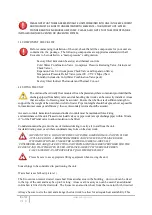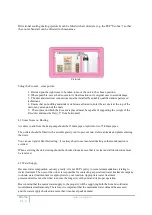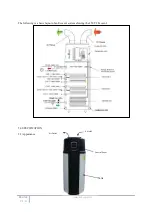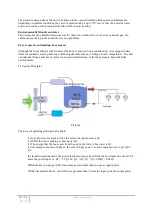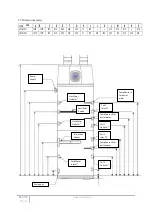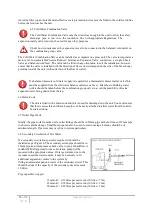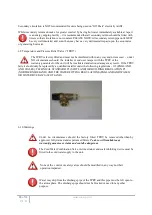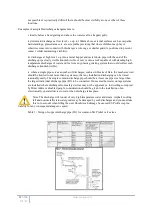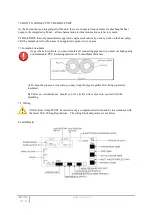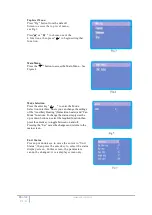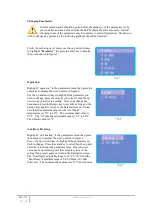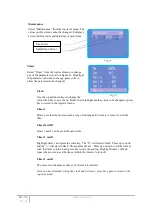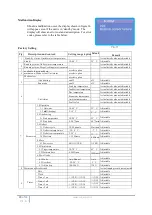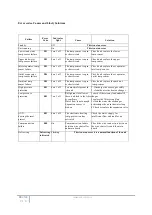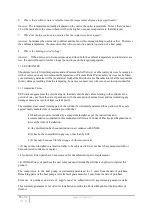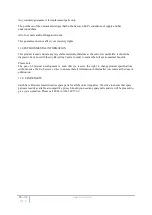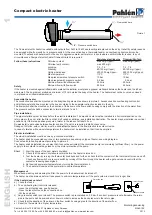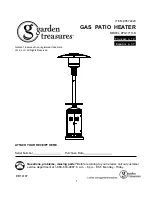
20
of 34
V 1.0
www.esavep.com
For units with secondary coil facilities, please discuss the use of the coil, and a
suitable configuration for use, with a suitably qualified plumber/engineer before
proceeding to add a heat source to the secondary coil.
6.11 Discharge Pipe Work
It is a requirement of Building Regulations that any discharge from an unvented system is conveyed to a
position where it is visible, but will not cause danger to persons in or about the building. The tundish and
discharge pipes should be fitted in accordance with the requirements and guidance notes of Building
Regulations Information Sheet No. 33, available from the British Board of Agreement gives further advice
on discharge pipe installation. For discharge pipe arrangements not covered by G3 Guidance or BBA
Info Sheet No.33, advice should be sought from your local Building Control Officer. Any discharge pipe
connected to the pressure relief devices (Expansion Valve and Temperature/ Pressure Relief Valve) must be
installed in metal, in a continuously downward direction and in a frost free environment. The water may
drip from the discharge pipe of the pressure relief device this pipe must be left open to the atmosphere. The
pressure relief device is to be operated regularly to remove lime deposits and to verify that it is not
blocked.
Please see figure 7 for typical discharge arrangement.
6.12 Expansion Vessel
An appropriately sized expansion vessel must be fitted to the system in which the unit is incorporated. The
Expansion vessel can be fitted to the cold feed in to the unit (see Figures 4 and 6 above).
6.13 G3 Requirement
G3 (ENGLAND AND WALES), TECHNICAL STANDARD P3 (SCOTLAND) OR
BUILDING REGULATION P5 (NORTHERN IRELAND) AND THE WATER FITTING
REGULATIONS (ENGLAND AND WALES) OR WATER BYELAWS (SCOTLAND) state
that here shall be precautions to ensure that the hot water discharged from safety devices is
safely conveyed to where it is visible but will not cause danger to persons in or about the building.
6.14 G3 Guidance Section
The installation should include the discharge pipe(s) (D1) from the safety device(s). In either
case the tundish should be vertical, located in the same space as the unvented hot water storage
system and be fitted as close as possible and within 500mm of the safety device(s) e.g. the
TPRV. The discharge pipe (D2) from the tundish should terminate in a safe place where there
is no risk to persons in the vicinity of the discharge, be of metal and:
a) be at least one pipe size larger than the nominal outlet size of the safety device unless its total
equivalent hydraulic resistance exceeds that of a straight pipe 9m long i.e. discharge pipes
between 9m and 18m equivalent resistance length should be at least two sizes larger than the
nominal outlet size of the safety device, between 18 and 27m at least 3 sizes larger, and so on.
Bends must be taken into account in calculating the flow resistance. Refer to figure 7 and Table 1
below. An alternative approach for sizing discharge pipes would be to follow BS6700:1987
Specification for design, installation, testing and maintenance of services supplying water for
domestic use within buildings and their curtilages, Appendix E, section E2 and table 21.
b) have a vertical section of pipe at least 300mm long below the tundish before any elbows or
bends in the pipe work.
c) be installed with a continuous fall, and in a frost free environment.
d) have discharges visible at both the tundish and the final point of discharge, but where this is



